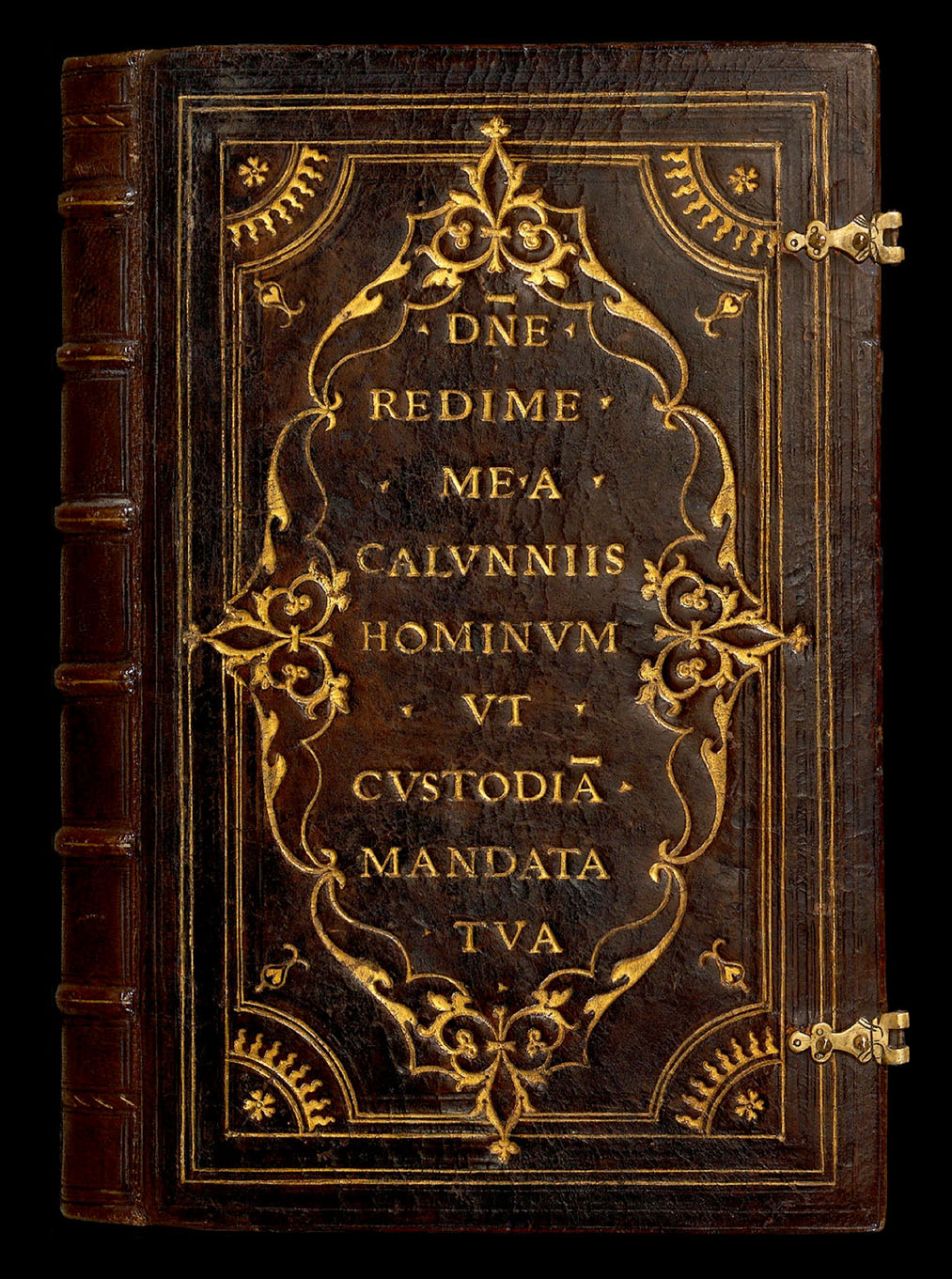

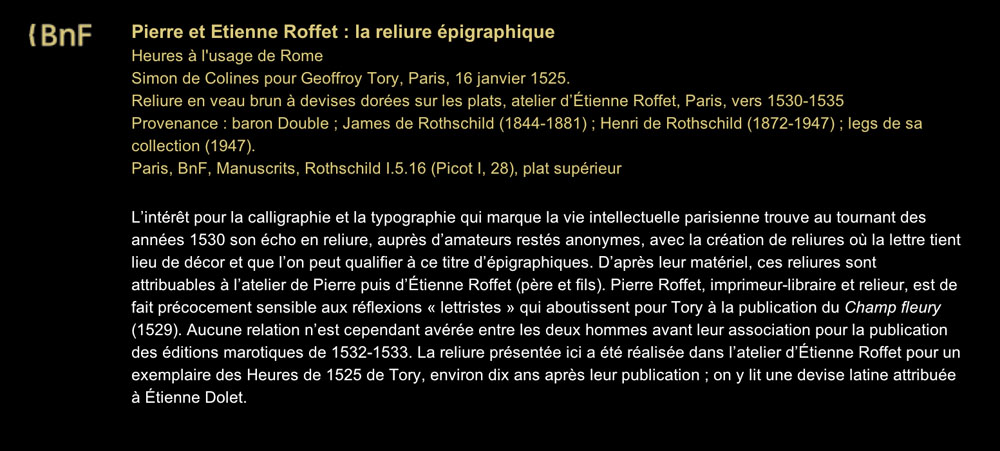
| I discovered this binding while randomly searching through Google images for Ètienne Roffet bindings, actually this binding is found on an Exposition web page for Geoffroy Tory by the Bibliothèque Nationale de France. I nearly fell off of my chair when I saw it, here was the earliest Etienne Roffet binding found so far and with a critically important plaque and other mysterious tools. As the reader will know we have been pondering this plaque and the various binders who have copied it, on a number of pages already. |
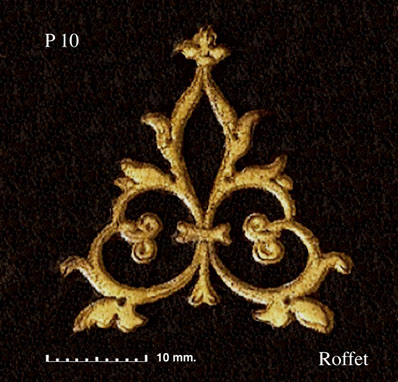
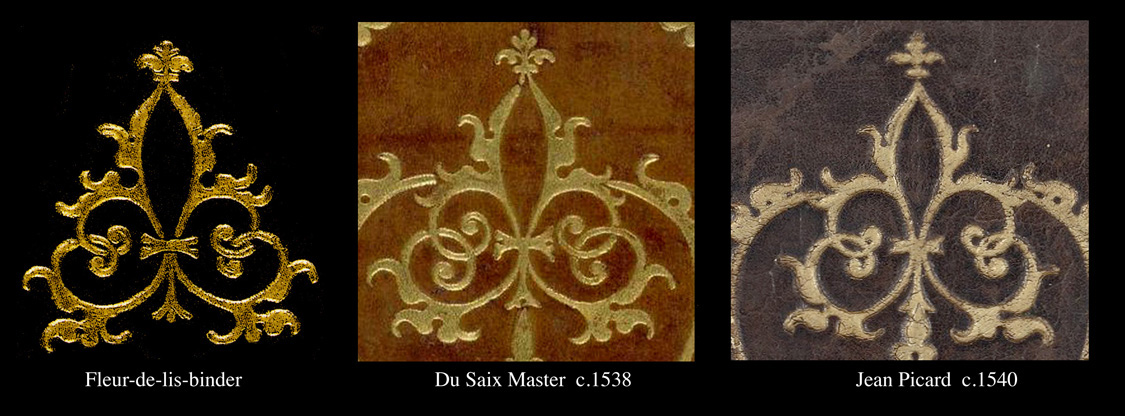
| In Comparative Diagram 1, we compare these plaques, it may be that the Roffet plaque is the earliest at c1535. Who copied who is an interesting question. I have listed it as plague number P 10 although it is probably one of the earliest. |
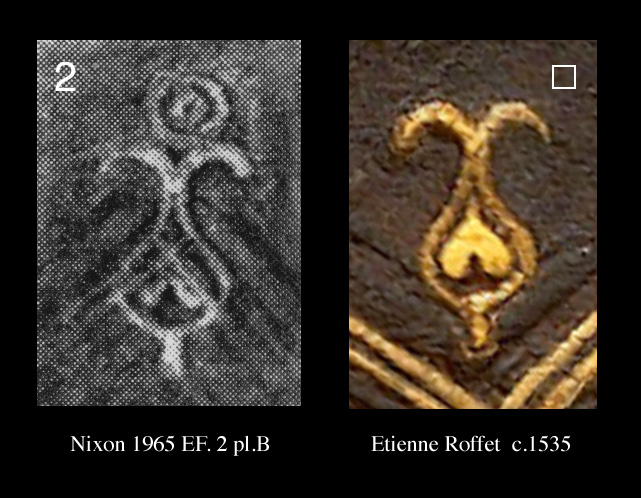
| In Comparative Diagram 2, we see Nixon's 1965 rubbing EF 2, which he has classified as a very early Fleur-de-lis Binder tool. Surely this is the link if there is one between these binders. This ultra rare imprint is found on only one other binding. that I can ascertain, Nixon claims it is on the Estienne Bible but I don't see it. But even if it was there, we do not see a connection to any other Fleur-de-lis tools. It may be that Roffet was the binder for the Nixon 1965 binding example No 10. However that still does not link to other bindings where we find certain Fleur-de-lis Binder imprints. |
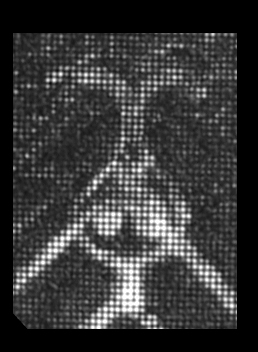
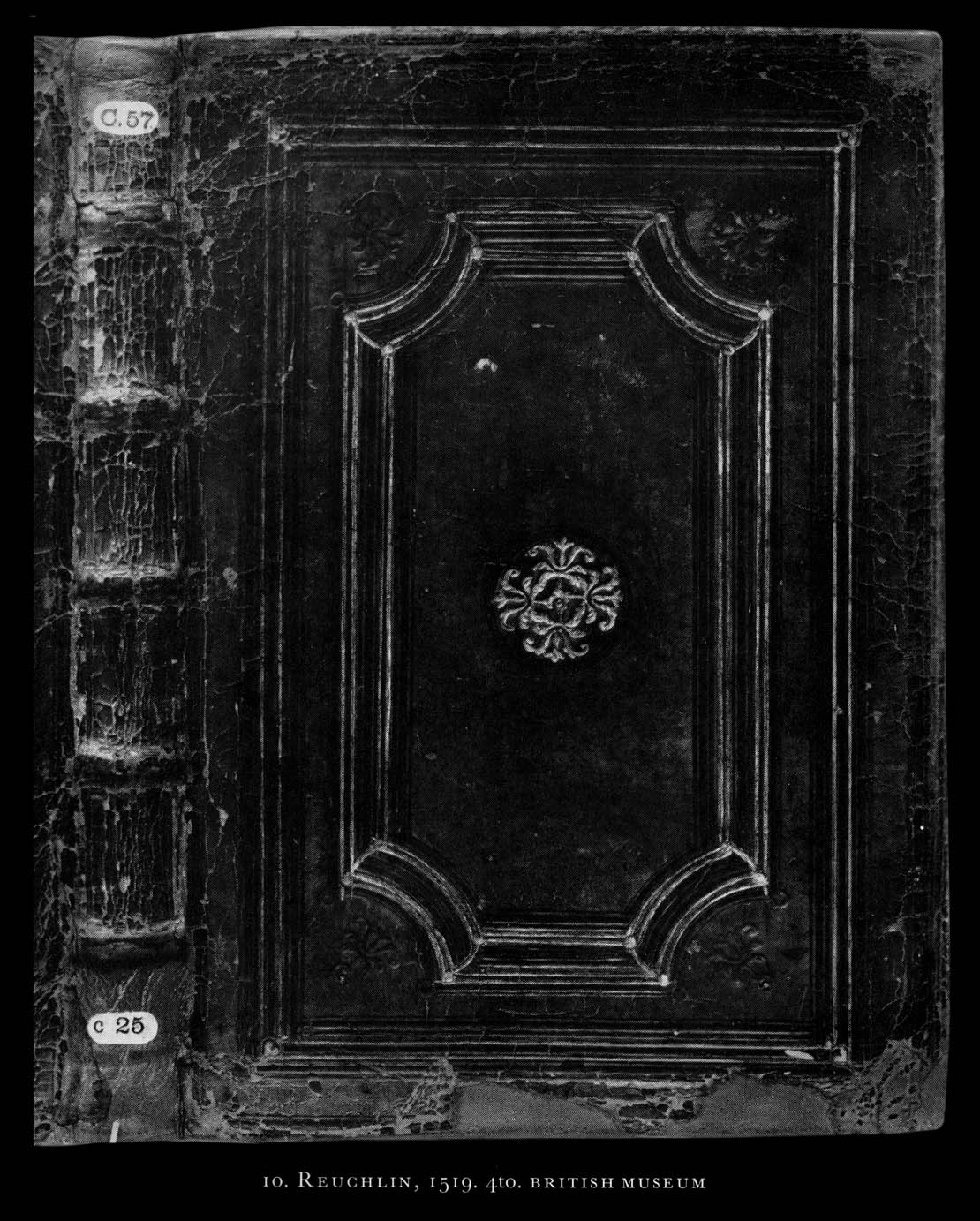
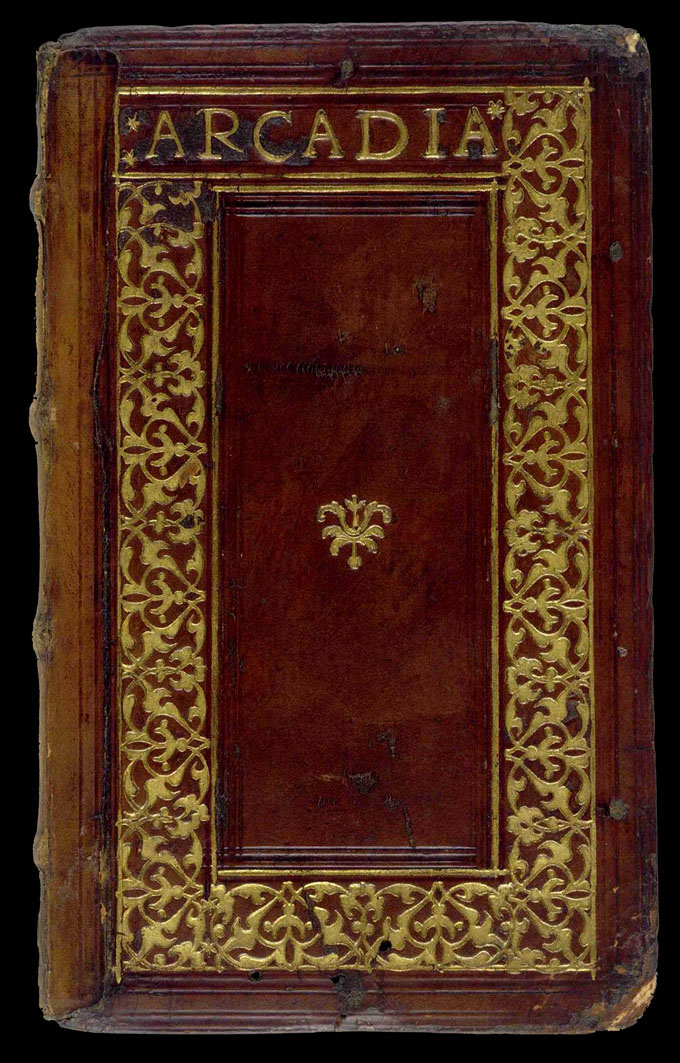
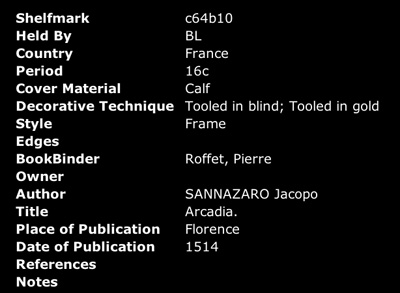
| Stranger than fiction, I decided after doing the first part of this page, to go back and search randomly all the French 16c bindings in the British Library database looking for the unusual inner frame that is found on binding No. 10. While I was searching I thought I should keep an eye open for center ornaments, not long into the search I spotted a unusual center ornament and clicked on it to see what it was, as if by a bizarre coincidence the ornament looked very much like one of the fleurons in the central ornament of Nixon's binding number 10, this fleuron he has dubbed EF. 1 ... i.e. Fleur-de-lis Binder tool one. The shock was even greater when I discovered that this binding was by Pierre Roffet! I show it above. How did no one notice this before? Why didn't I check Pierre Roffet before? More proof that we only find what we are looking for, actually I think I saw this binding by Pierre Roffet before but as I was looking for something quite different at that time I failed to notice the importance of this small fleuron serving as a central ornament. Now we have found something that may open the way to more discovery. |
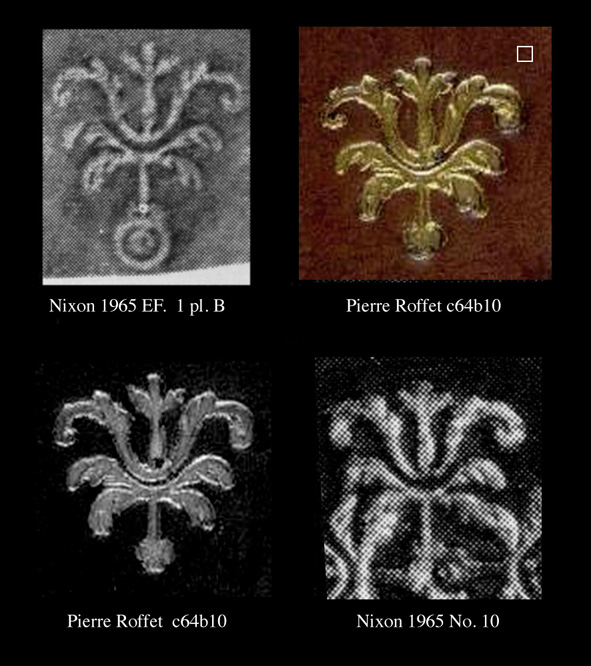
| Just a few final notes here, to clear up some small details that I am sure some of you have been wondering about. The rubbings of Nixon for EF. 1 and EF. 2 show circles that are not seen in the actual imprints. On close inspection of Binding No. 10, you will notice that the same fleuron that serves as the foundation of the central ornament is also found in blind in the corners, it is one of these blind corner imprints that Nixon used for his rubbing model, each of the four blind imprints have been pierced at their base to allow a brass foot which has since perished leaving simply the hole of fixation, it is this hole that shows up in the rubbing but is not actually part of the imprint. |
| information about the author | return to the home page of VIRTUAL BOOKBINDING |